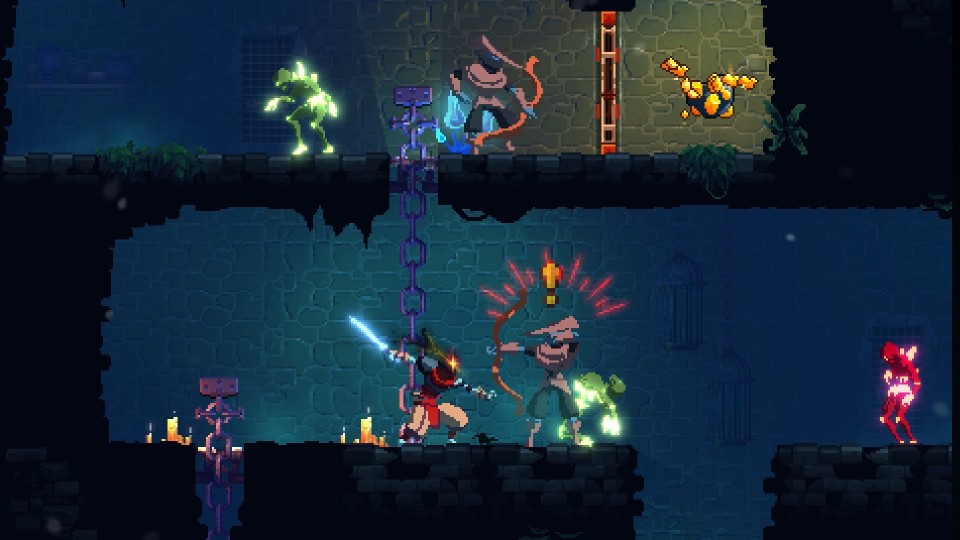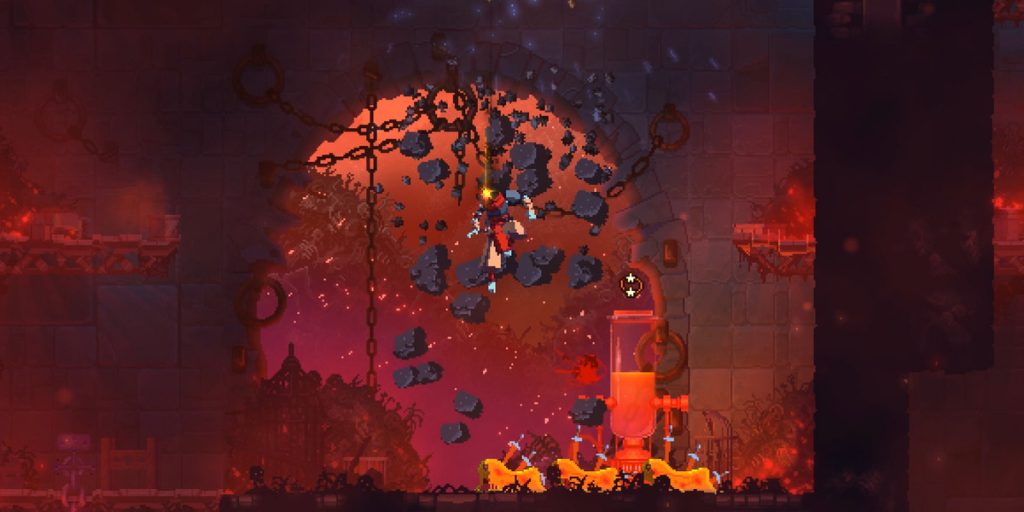The news of Dead Cells’ expanded release is great news not just for fans of rogue likes, but for anyone who enjoys quality gaming experiences.
Last week, Twin Motion announced their 2D platformer is now set for a full release on Switch, PlayStation 4 and Xbox One. For PC players, this comes as no great surprise after its stellar reception from fans and critics alike since its launch on Early Access back in May; for console owners though, there might be some who don’t get what all the fuss is about. To that end, we’ve got you covered with a breakdown of what makes Dead Cells one of the stand out titles to watch (and hopefully play) in 2018.
A True Tribute
The game’s premise is simple: Players take the role of a reanimated prisoner’s corpse in an abandoned fortress, manipulated by a gelatinous bunch of cells. Making their way through randomly generated floors and levels, they’ll take on enemies while collecting money and a variety of different weapons and abilities, slashing and burning their way deeper into the inhospitable dungeons. By advancing to the end of each level, they can buy, upgrade and replace abilities and equipment, even saving certain abilities like additional damage or health potions for future playthroughs. One wrong move though, and players will be killed and sent back to the start to try and make their way through a new series of areas, sans their former abilities.

At first glance, it’s easy to see the title’s art and design are heavily inspired by Metroid and Castlevania, with exploration and platforming making up the bulk of the gameplay. Each area has different paths to explore and treasures to uncover, making fans of the genre feel right at home in its damp and deadly corridors.
However, the game also pays homage to the fast-paced NES era ilk of Ninja Gaiden and ActRaiser. Combat is quick and brutal, rewarding those who can make spilt second decisions on where, when and how to confront enemies. A single mistake could mean the difference between advancing further into the game or starting from scratch, and the enemies only get tougher with each new level.
Risk and Reward Done Right
While this can present a steep challenge curve for players, the game offers some of the best risk and reward balancing of any rogue-like out there. Each of the game’s obstacles offers an equally enticing treasure hidden behind it, and should the player complete the level with it in tow, it could mean the difference between victory or defeat moving forward. Opening a cursed treasure chest could cut the player’s health in half for the duration of the level, but offer a weapon capable of decimating the next floor’s enemies with ease; likewise, successfully reaching the other side of a hallway coated in spike hazards could net the player a boatload of cash and supplies.

Even the game’s full restart penalty for death never feels completely unfair. While it does force players to start from scratch in terms of weapons and money, the permanent abilities offer a slight advantage over their first run with extra room for experimentation and mistakes. The lessons players learn about enemies and their movement patterns hold over into new playthroughs as well, making past levels that much easier to get through with each attempt.
Proper Passion Project
All of these elements culminate in a game that not only pays tribute to its inspirations, but gives one of the best experiences the genre has offered in a long time. With their early access build alone, Motion Twin has shown how committed they are to providing as polished of an experience as possible, and with a full release intended to hit consoles and PC later this year, Dead Cells only looks to be improved upon further. If you’ve been on the fence about checking out this stellar title, there’s no better time to see why people are so excited to get their hands on this game.
For more great games which show the passion of the team behind them, check out our thoughts on My Time at Portia, an indie title in the same vein as Animal Crossing which is currently available on Early Access.



